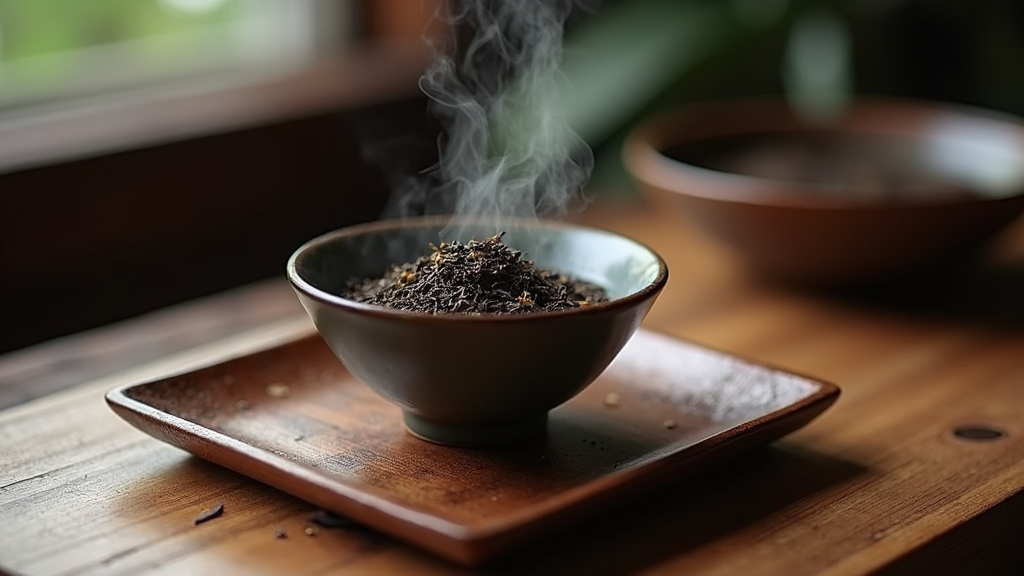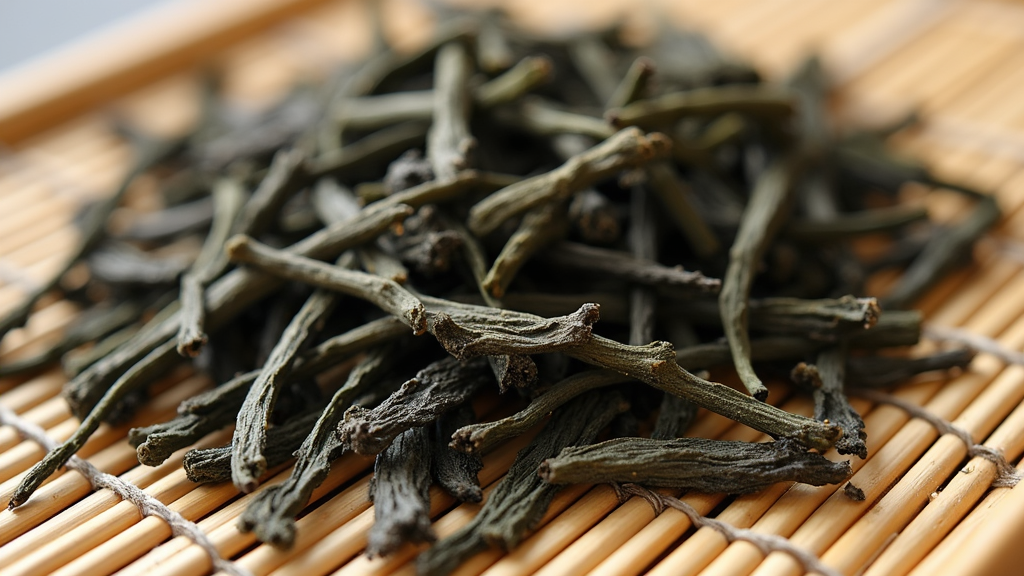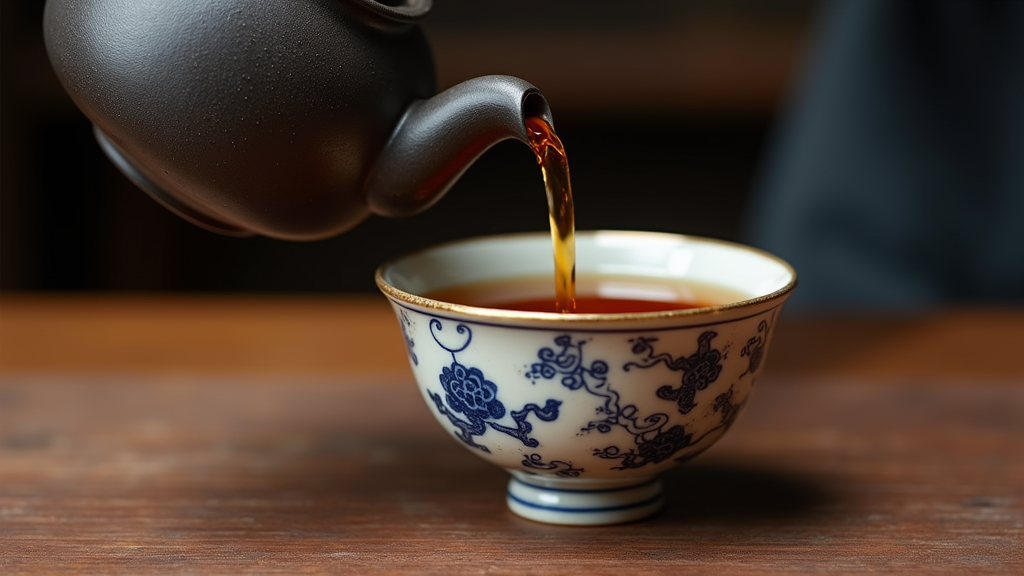
There’s something instantly comforting about hojicha, a Japanese green tea known for its warm, toasty aroma that fills the air the moment hot water touches the leaves. If you haven’t tried this roasted green tea yet, you’re in for a treat.
Hojicha’s gentle flavor and subtle sweetness make it the perfect drink to savor on a quiet afternoon or whenever you need a little relaxation.
Unlike most Japanese green teas that are grassy and vibrant, hojicha brings mellow, nutty vibes with a soothing reddish-brown color.
The roasting process transforms its whole character, creating a cozy cup even those who usually avoid green tea can enjoy.
So, what’s the story behind hojicha, and why is it gaining popularity worldwide? Here’s a deep dive into its origins, flavor, benefits, brewing tips, and how to make the most of every cup.
The Story Behind Hojicha’s Origins
Hojicha’s history is relatively young compared to classics like sencha or matcha. It originated in Kyoto in the 1920s as a clever way to reuse leftover tea leaves.
Vendors roasted bancha and older leaves over charcoal, and the result was a green tea with an inviting amber hue, rich aroma, and smooth toasted taste.
What makes hojicha unique is the roasting process. Most Japanese green teas are steamed to lock in fresh, grassy flavors, but hojicha is roasted after steaming, often at high temperatures.
This creates a flavor profile that’s less grassy and astringent, favoring warm, caramel-like notes.
Whether you choose a basic daily sip or a single-origin batch from a Kyoto farm, you’ll enjoy the same signature roasted charm.
The Magic of Roasting: What Sets Hojicha Apart
Roasting transforms hojicha’s appearance, flavor, caffeine content, and mouthfeel. The leaves change from green to nutty brown, sometimes even coppery, while the brewed tea develops a reddish-brown tint.
Instead of vegetal or seaweed flavors common in other green teas, hojicha tastes of roasted nuts, caramel, and subtle smokiness. It’s a pleasant surprise for anyone expecting a typical green tea profile.
Roasting also lowers caffeine content—perfect for those wanting a calming drink in the evening or something gentle for children.
Typically made from bancha (harvested later in the season) or even tea twigs, the roasting process breaks down caffeine and bitter compounds, resulting in a smoother, softly sweet cup.
Hojicha’s rich aroma is where it truly shines—imagine roasted chestnuts, cocoa hints, and warm autumn leaves. Opening a pouch of fresh hojicha can instantly lift your mood with its inviting scent.

Why Hojicha’s Taste Is So Inviting
Hojicha occupies a unique flavor lane. While sencha and gyokuro boast umami and freshness, hojicha offers warmth, smoothness, and gentle sweetness. It lacks the bitterness or astringency that sometimes puts people off green tea.
The roasting releases natural sugars that create toasty flavors reminiscent of roasted grains, coffee, or caramelized nuts.
This makes hojicha a gentle introduction to Japanese green tea—a comforting cup when the weather cools or when you want something soothing and different.
Depending on leaf quality, roast style, and region, some hojichas lean woodsy or smoky, while others highlight sweetness or cocoa notes.
Hojicha’s clear amber brew also stands out visually, distinct from the grassy greens of other Japanese teas. For iced tea lovers, hojicha is a winner, as its robust flavor holds up well cold.
Digging Into the Benefits of Hojicha
Besides its great taste, hojicha brings a handful of nice perks for everyday wellness. While it has less caffeine than most green teas, it still delivers plenty of antioxidants and polyphenols.
- Gentle on the stomach: Its milder flavor and low astringency mean it’s less likely to upset digestion compared to other green teas.
- Low caffeine: Ideal for late afternoons, evenings, or kids—hojicha lets you relax without affecting sleep.
- Antioxidant-rich: Although roasting reduces some catechins, hojicha still contains antioxidants that help protect cells from oxidative stress.
- Promotes relaxation: Brewing and sipping hojicha can be a calming ritual. Its cozy aroma helps ease the mind and body.
Curious about the science behind hojicha? The Japanese Tea Central Council offers research and insights on antioxidants in Japanese green teas, including hojicha.
Brewing Hojicha for the Best Flavor (Hot or Cold)
Hojicha is one of the easiest Japanese green teas to brew. Its forgiving nature means you’ll get a tasty cup even if you’re not perfect with timing or measurements.
Here’s a straightforward guide to maximize flavor:
- Water Temperature: Use about 190°F (88°C), a bit hotter than for delicate green teas. Boiling water works too but slightly cooler water brings out more sweetness.
- Tea-to-Water Ratio: Use 2–3 grams (about 1 heaping teaspoon) per 8 oz (1 cup) of water. Adjust to your taste.
- Steep Time: 30 seconds to 1 minute for the first brew. You can steep longer for richer flavor or shorter for subtle notes.
- Multiple Infusions: Quality hojicha can be brewed 2–3 times, with each infusion revealing new flavor layers.

Getting More from Your Hojicha Experience: Handy Accessories
Enjoying hojicha isn’t just about the leaves. The right gear can make a big difference in the vibe and taste of your brew. Here are some accessories I’ve found really useful for bringing out the best in hojicha:
1. Japanese Kyusu Teapot
The classic side handled pot not only looks great but also makes pouring easy and neat. It brings a little bit of Japanese tradition to your brewing space.
2. Fine Mesh Infuser
Hojicha leaves can be small and flaky, so a good infuser keeps stray bits out of your cup. You can find stainless steel infusers for almost any mug or teapot; you don’t need anything fancy.
3. Japanese tea cups
The slim, handleless cups used in Japan stay cool to the touch and help you savor each sip. They’re a nice addition if you want an authentic feel.
4. Airtight tea caddy
Keeping hojicha fresh is really important. An airtight container will protect those delicious roasted aromas until you’re ready to brew the next round.
These simple tools help make the ritual of drinking hojicha even more enjoyable.
Hojicha vs Other Japanese Teas
Here’s a quick comparison to see how hojicha stacks up against other popular Japanese teas:
| Tea | Taste | Caffeine | Color | Best Time |
|---|---|---|---|---|
| Matcha | Grassy, umami | High | Bright green | Morning boost |
| Sencha | Fresh, vegetal | Medium | Yellow-green | Afternoon sip |
| Hojicha | Toasty, mellow | Low | Amber-brown | Evening unwind |
How I Fell for Hojicha: A Cozy Tea for Quiet Reads
I wasn’t always a hojicha drinker. A good friend recommended it as the ultimate reading companion—and one cozy cup later, I understood exactly what she meant.
Now, it’s my go-to tea for those quiet, page-turning afternoons or late-night wind-downs.
If you’ve read my post Sipping Stories: My Favorite Green Teas For Reading Moments, you’ll know I believe the right tea can make a good book feel even better.
Here are some of my favorite hojicha picks:
- Bancha Hojicha Organic Roasted Green Tea — mellow flavor, low caffeine
- YAMASAN KYOTO UJI Hojicha Green Tea— smooth and authentic
- Premium Hojicha Green Tea KIMIKURA— rich aroma and deep roasted taste
Hojicha: A Warm Hug in a Teacup
With its toasty, mellow character and gentle flavor, hojicha stands apart from other Japanese green teas. It’s perfect for cozy mornings, relaxing evenings, or whenever you want a comforting drink.
Low in caffeine but rich in aroma and antioxidants, hojicha deserves a place in any tea lover’s collection. Brew a cup, breathe in those warm roasted notes, and let yourself unwind with this uniquely inviting Japanese tea.
Have you tried hojicha yet? What’s your favorite way to enjoy it. Drop your stories and questions in the comments below!
This post contains affiliate links. If you make a purchase through these links, I may earn a commission at no extra cost to you.
